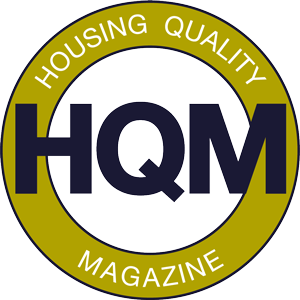New figures raise questions about efforts to free up illegally occupied homes. Keith Cooper investigates.
The plumber had a funny feeling about the house. The bedroom doors were all padlocked shut. Strangers were turning up weekly, suitcases in hand, according to a tip off. Here are but a few clues that a property is being sub-let illegally, one form of tenancy fraud, among others.
If some widely accepted figures are correct, this is a major problem in social housing. Almost 150,000 homes owned by councils and housing associations are subject to some kind of tenancy fraud, according to the Tenancy Fraud Forum, a membership body for housing and legal professionals. With each illegally occupied property estimated to cost the public purse £42,000, the total financial hit could reach an eye-watering £6.3bn.
These are big figures and point to a huge potential for freeing up homes for homeless families, as well as savings for councils edged towards bankruptcy by temporary accommodation costs. So, just how seriously are social landlords taking tenancy fraud? This is a notoriously tricky question to answer in full.
Much more is known about tenancy fraud in the third of social housing stock under council control than the majority run by housing associations.
The Regulator of Social Housing collects but doesn’t collate or publish data on tenancy fraud on individual associations or the sector as a whole. In contrast, many authorities regularly release figures on the illegal activity they’ve uncovered, the number of homes freed up as a result and what this looks like in savings. And until recently, figures on fraud for the local authority sector were collected and analysed.
 Bristol Council, for instance, in a recent internal auditors report, says it saved £2.5m by tackling 34 tenancy fraud cases in the six months between April and September last year. The London Borough of Kensington and Chelsea, which has a four-strong tenancy fraud team, recovered 36 properties from fraudsters in the 2023/24 financial year, saving itself £1.5m, it told HQM. Merton Council spent £136,000 on fraud investigation in 2023/24 but recovered four properties, saving itself £372,000 on temporary accommodation costs in the same period, according to a fraud report in March. In total, just seven authorities claimed savings of £7.8m in a year, according to our review of papers.
Bristol Council, for instance, in a recent internal auditors report, says it saved £2.5m by tackling 34 tenancy fraud cases in the six months between April and September last year. The London Borough of Kensington and Chelsea, which has a four-strong tenancy fraud team, recovered 36 properties from fraudsters in the 2023/24 financial year, saving itself £1.5m, it told HQM. Merton Council spent £136,000 on fraud investigation in 2023/24 but recovered four properties, saving itself £372,000 on temporary accommodation costs in the same period, according to a fraud report in March. In total, just seven authorities claimed savings of £7.8m in a year, according to our review of papers.
“Finding and stopping social housing fraud can rapidly reduce homelessness and poverty among families,” Westminster Council auditors said in a paper last year. “The recovery of social housing properties by the counter fraud team has a positive impact upon the temporary accommodation budget,” another paper by Brent Council said in December.
The last complete picture of counter-fraud activity for councils in England was compiled by the now-defunct Audit Commission, and some time ago, its 2014 report, ‘Protecting the Public Purse’, found more than 3,000 tenancy frauds had been detected by councils in a single year. That scale of fraud detection would today put an annual £126m dent in the £1.7bn temporary accommodation bill, which the Local Government Association says councils faced in 2022/23.
“With each illegally occupied property estimated to cost the public purse £42,000, the total financial hit could reach an eye-watering £6.3bn”
When the commission closed in 2015, the Chartered Institute of Public Finance and Accountancy (Cipfa) continued checking on council fraud but with a voluntary reporting scheme. As a result, participation levels fell through the floor. Local authorities’ capacity to detect tenancy fraud began withering in 2016 after an exodus of council-based investigators to the government’s Single Fraud Investigations Service, a unit which focuses on benefit fraud. Only a quarter of authorities responded to Cipfa’s latest and apparently final fraud study in 2020.
But what of tenancy fraud in the 4.4m housing association homes in England?
This has, until now, been an impossible question to answer. But thanks to a successful request under the Freedom of Information Act, HQM can give the strongest-ever indication of the scale of tenancy fraud detection by housing associations.
The picture this FoI response provides is limited. Due to restrictions agreed with the regulator, the response only includes fraud reports entered on a ‘standard template’ and for the single year 2022/23. The names of associations in the data are anonymous.
There’s also “no requirement” for associations to use this template and only 118 of the 216 reports the regulator received did so. The RSH only requires fraud reports from the 230 associations with 1,000 homes or more, a group which own the vast majority (96%) of homes but comprises just over a fifth (17%) of providers. In total, the regulator received 212 fraud reports in 2022/23, 18 shy of the full amount, its response says. “Landlords must provide timely financial reporting to us, including for tenancy fraud, and we take it seriously when they fail to do this,” a spokesperson for the RSH says.
Despite these limitations, our analysis gives the fullest-ever picture of fraud in the housing association sector. The RSH’s fraud reports have “not previously been collated”, it says. Individual associations’ fraud reports were instead analysed as part of its “ongoing scrutiny of financial information”, it confirmed.
So, what does the data show? Our analysis shows that more than half of the 118 association reports (59) were ‘nil returns’, indicating they had nothing to report. The remaining 59 associations reported a total financial loss through fraud of £1.1m. While 204 tenancy frauds were reported, only five associations attached a financial loss to 41 of them, totalling £127,433. More than half (60%) of the 204 tenancy frauds were reported by three associations. The biggest financial losses were in the development category, with a single association reporting a loss of £359,000 (see box, key findings on fraud).
While these reported figures seem extraordinarily good for a sector with more than four million homes and a turnover of £16bn in lettings income, they have alarmed anti-fraud advisers.
“The total reported fraud of £1.1m seems very small and a huge red flag, signalling that we haven’t got a handle of fraud in this sector,” says Arun Chauhan, fraud specialist at Tenet Law and co-author of ‘Fraud… Nothing to See Here!’, a 2023 report which claims that many associations are either “unconsciously” or “consciously” not dealing with fraud risk. “The concern is that this data indicates that the regulator hasn’t got a depth of understanding of the seriousness of fraud in the sector,” Mr Chauhan adds.
This £1.1m financial collective loss does appear to give associations an enviable fraud rate of 0.01% on the £16bn lettings turnover reported in their latest global accounts. It compares with fraud rates of almost 2% in the private rental property category and between 1.8 to 2.9% in the public sector, revealed in the Annual Fraud Indicator 2023 report by the University of Portsmouth’s Centre for Cybercrime and Economic Crime.
“While these reported figures seem extraordinarily good for a sector with more than four million homes and a turnover of £16bn in lettings income, they have alarmed anti-fraud advisers”
Paul Roberts, former finance director at The Guinness Partnership and the other co-author of ‘Fraud… Nothing to See Here!’, is concerned about the large number of nil returns. “That reinforces the point that what’s reported to the regulator could be understated, which in all likelihood must mean that the actual figure will be much bigger,” he adds.
“For a sector with turnover in its billions, the amount of fraud it reports might seem negligible, making it easy for people to bat this away as an issue. But that isn’t the way to look at it. There’s a lot to unpick in these figures especially when compared with other sectors with equal complexity, risks and size,” Mr Roberts says.

He also questions whether the figures on development and tenancy fraud are realistic or right. “When you consider the risks involved in development fraud, could this be just the tip of an iceberg?” he asked. “The number of tenancy frauds reported just doesn’t feel right in a sector with four million homes.”
Alan Bryce, former head of counter-fraud at the Audit Commission, says he’s “shocked” by the tenancy fraud figures. “There were more than 3,000 tenancy frauds detected by English local authorities in a single year in 2014,” he adds. “These figures show that housing associations managed to detect just over 200, when you would reasonably expect over 4,000 a year. Something’s going seriously wrong and the indifference of the Regulator of Social Housing to the issue of tenancy fraud is one of the main causes.”
Mr Bryce is less surprised that around half of the 204 tenancy frauds were reported by three associations. “This confirms the point that there’s only a relative handful of very committed associations taking this issue as seriously as they should.”
The Tenancy Fraud Forum believes that associations will only take tenancy fraud seriously if the regulator forces their hand. “There’s no financial incentive for associations to detect tenancy fraud, they have so many other areas to deal with, and the main financial benefits go to the taxpayer and local authorities, not to the housing association, Mr Bryce adds. “That’s a hard sell to a housing association chief executive at a time of financial constraints, but is still the right thing to do. That’s also why only the regulator is in a position to motivate housing associations to do more. No one else will.”
The RSH said tenancy fraud is an important issue and social landlords must act on their responsibility to detect and manage it. “We require larger landlords to report any losses from fraudulent activity as part of their annual returns to us. We scrutinise their returns and follow up as appropriate when there are issues.”
Associations’ interest in tackling fraud does appear to have waxed and waned, according to those we spoke to. A social housing fraud prevention programme piloted by L&Q in 2013 was closed down after “being no longer considered a priority”, according to Nicola Evans, its tenancy fraud manager. But a new team, set up two years ago, has already recovered 179 social homes, saving the public purse £7.5m.
“The new team was established because of our unprecedented housing crisis,” Ms Evans says. “Social housing is now such a scarce resource and we need to protect it.” The five-strong team are all qualified in counter-fraud and include a retired police sergeant.
“The multi-million pound collective savings revealed by these associations point out an apparent flaw in the RSH’s fraud reporting regime”
L&Q gets referrals from residents, local authorities, contractors, and its own housing and disrepair staff. Cases requiring management decisions, such as succession applications, are prioritised.
Cases of alleged illegal subletting require much more investigation and can be bound up with other crimes, Ms Evans says. “When working for a local authority we had a case where a tenant’s room was being used as a brothel. The ladies working there had been brought over from Brazil. So that case ended up not only being about the misuse of the property but also human trafficking and organised crime because the tenant was working as part of a gang.”
Southern Housing says it’s taken back 89 homes from fraudsters since April 2021. This amounts to a saving of £3.7m. It employs two dedicated tenancy fraud investigators and works with local authorities. “The main obstacle we face is the willingness of some agencies and stakeholders to share information. This is why it’s important to build up strong partnerships, which we continue to do,” a spokesperson adds.
Rajvinder Vine, customer safety manager at Riverside, says it’s recovered nine properties in the past year. Its counter-fraud operation starts with prevention. “When we sign up a new customer for a tenancy, we ask them to use their property as their main principle home and not sub-let it,” Ms Vine says. “That also helps them understand that their neighbours should also be in their homes.”
Ms Vine adds that Riverside’s staff are trained to be respectful to people they find in homes which are illegally sub-let. “You don’t know what their story is and they might not know that it’s being sub-let,” she says. “But with so many people on waiting lists and in temporary accommodation, there’s nothing better than getting a property back for someone else that needs a home.”
West Midlands-based Bromford has since 2021 seen a 100% year-on-year increase in the number of properties it’s recovered from tenancy fraudsters after taking a more “pro-active” approach. Last year it recovered 32 properties, saving the public purse £1.3m. Peabody says its specialist tenancy fraud team saved taxpayers £2.5m last year.
The multi-million pound collective savings revealed by these associations point out an apparent flaw in the RSH’s fraud reporting regime.
How come it clocked just £127,000 in savings on tenancy frauds, when associations openly told HQM of far larger amounts?
One clue lies in the RSH’s response to the FoI. This states: “Tenancy fraud does not always result in a direct financial loss to the PRP [private registered provider] and is therefore often entered, with no financial impact recorded.”
Mr Bryce takes this statement as evidence that the “massive financial loss” to the taxpayer as a result of tenancy fraud is “not a concern” to the RSH. “This is simply outrageous,” he adds. “It also shows disdain for the homeless families and those on the housing waiting list that are impacted by this type of fraud.”
For Mr Roberts, this apparent reporting shortfall points to a need for the regulator to tighten its reporting requirements. “Fraud reporting in the sector could be a lot more consistent, and with clearer parameters,” he says. “It doesn’t need to go down to the n-th degree; it should be pragmatic. With the regulator’s help, can we be more effective at reporting and tackling fraud? We need a better feedback loop so we can all be more effective.”
For without a much better picture on tenancy fraud, there’s no way of knowing whether housing associations and councils are tackling it – and therefore saving the public purse billions and freeing up tens of thousands of social homes.
|
Largest frauds by value |
||
|
Fraud category |
Number of reports |
Gross estimate of loss |
|
Development |
5 |
£359,900 |
|
Other |
79 |
£188,700 |
|
Procurement |
4 |
£182,342 |
|
Theft – goods |
15 |
£129,369 |
|
Tenancy |
204 |
£127,433 |
|
Theft – general |
33 |
£97,590 |
|
Payroll |
12 |
£14,632 |
|
Theft – rent |
3 |
£9,927 |
|
Maintenance |
1 |
£0 |
|
Voids |
1 |
£0 |
|
Grand total |
357 |
£1,109,893 |
|
Source: FoI request |
Key findings
- Half of the 118 registered providers for which we have data submitted ‘nil returns’ for fraud. The other 59 reported 356 frauds
- The largest number of frauds by category were tenancy (204), other (79) and general theft (33)
- The largest fraud reports by gross estimate of loss were development (£359k), other (£188k) and procurement (£182k)
- Four associations reported development fraud. Only two provided financial loss figures, of £359k and £900
- Only five PRPs attached a financial loss to 41 tenancy frauds.





















